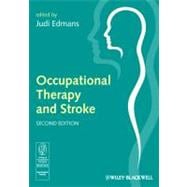
| List of Contributors | p. ix |
| Foreword | p. xi |
| Preface | p. xiii |
| Acknowledgements | p. xv |
| Introduction | p. 1 |
| Definition of stroke | p. 1 |
| Impact of stroke | p. 1 |
| Symptoms of stroke | p. 2 |
| Causes of stroke | p. 3 |
| Classification of stroke | p. 4 |
| International Classification of Functioning, Disability and Health | p. 4 |
| Medical investigations following stroke and TIA | p. 6 |
| The prevention of recurrence of stroke (secondary prevention) | p. 7 |
| Neuroanatomy | p. 9 |
| Damage that can occur in different areas of the brain | p. 13 |
| Policy documents relating to stroke | p. 13 |
| Self-evaluation questions | p. 23 |
| Theoretical Basis | p. 24 |
| Introduction | p. 24 |
| Theoretical constructs | p. 24 |
| Conceptual models of practice | p. 25 |
| Frames of reference | p. 27 |
| Neuroplasticity | p. 29 |
| Intervention approaches | p. 36 |
| Self-evaluation questions | p. 47 |
| The Occupational Therapy Process | p. 49 |
| Introduction | p. 49 |
| The occupational therapy process | p. 49 |
| Procedural reasoning in different stroke care settings | p. 53 |
| Professional duties | p. 60 |
| Self-evaluation questions | p. 63 |
| Early Management | p. 64 |
| Introduction | p. 64 |
| Prior to assessment | p. 64 |
| Initial interview | p. 66 |
| Initial assessment | p. 67 |
| Intervention | p. 75 |
| Equipment | p. 75 |
| Other impairments impacting on functional ability | p. 77 |
| Swallowing | p. 80 |
| Mood | p. 81 |
| Fatigue | p. 83 |
| Self-evaluation questions | p. 84 |
| Management of Motor Impairments | p. 86 |
| Introduction | p. 86 |
| Assessment | p. 86 |
| Management principles and intervention | p. 90 |
| Therapeutic aims of intervention | p. 91 |
| Positioning the early stroke patient | p. 91 |
| Clinical challenges | p. 109 |
| Upper limb re-education | p. 111 |
| Avoiding secondary complications | p. 112 |
| Self-evaluation questions | p. 116 |
| Management of Visual and Sensory Impairments | p. 117 |
| Introduction | p. 117 |
| Visual processing | p. 119 |
| Somatosensory processing | p. 127 |
| Auditory processing | p. 137 |
| Vestibular processing | p. 139 |
| Olfactory and gustatory processing | p. 141 |
| Self-evaluation questions | p. 142 |
| Management of Cognitive Impairments | p. 144 |
| Definition of cognition | p. 144 |
| Cognitive functions | p. 144 |
| Assessment of cognitive functions | p. 144 |
| Cognitive rehabilitation | p. 146 |
| Attention | p. 147 |
| Memory | p. 149 |
| Language | p. 151 |
| Motor planning and apraxia | p. 151 |
| Executive dysfunction | p. 155 |
| Self-evaluation questions | p. 157 |
| Management of Perceptual Impairments | p. 158 |
| Introduction | p. 158 |
| Definition of perception | p. 158 |
| Normal perception | p. 158 |
| Perceptual impairments | p. 160 |
| Perceptual assessment | p. 162 |
| Intervention | p. 165 |
| Self-evaluation questions | p. 172 |
| Resettlement | p. 173 |
| Home visits | p. 173 |
| Community rehabilitation | p. 174 |
| Support available after a stroke and self-management | p. 177 |
| Carers | p. 178 |
| Younger people | p. 180 |
| Lifestyle and long-term management | p. 180 |
| Leisure rehabilitation | p. 181 |
| Getting out of the house and transport | p. 183 |
| Driving after stroke | p. 185 |
| Vocational rehabilitation | p. 186 |
| Resuming sexual activity | p. 188 |
| Stroke education | p. 189 |
| Self-evaluation questions | p. 190 |
| Evaluation | p. 191 |
| Record keeping | p. 191 |
| Standardised assessments | p. 195 |
| Evidence-based practice (EBP) | p. 199 |
| Outcome measures | p. 203 |
| Standards | p. 206 |
| Self-evaluation questions | p. 207 |
| Appendix: One-Handed Techniques | p. 208 |
| References | p. 212 |
| Definitions | p. 229 |
| Useful Books | p. 231 |
| Useful Organisations | p. 233 |
| Index | p. 241 |
| Table of Contents provided by Ingram. All Rights Reserved. |
The New copy of this book will include any supplemental materials advertised. Please check the title of the book to determine if it should include any access cards, study guides, lab manuals, CDs, etc.
The Used, Rental and eBook copies of this book are not guaranteed to include any supplemental materials. Typically, only the book itself is included. This is true even if the title states it includes any access cards, study guides, lab manuals, CDs, etc.